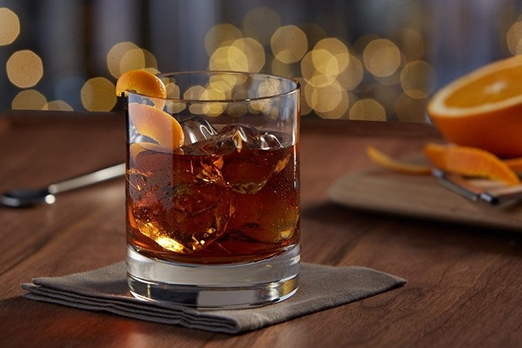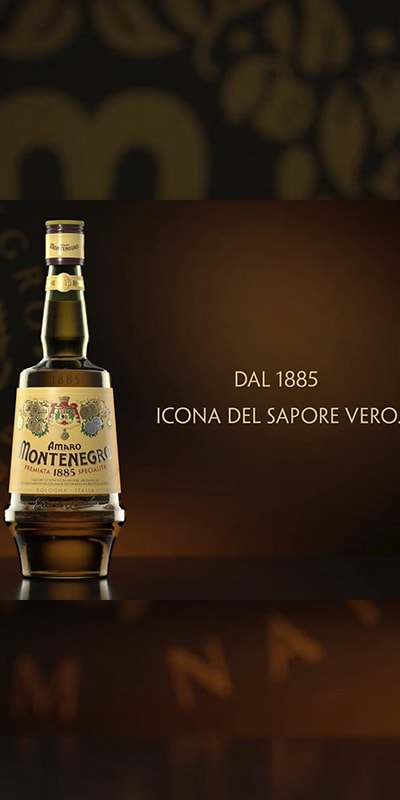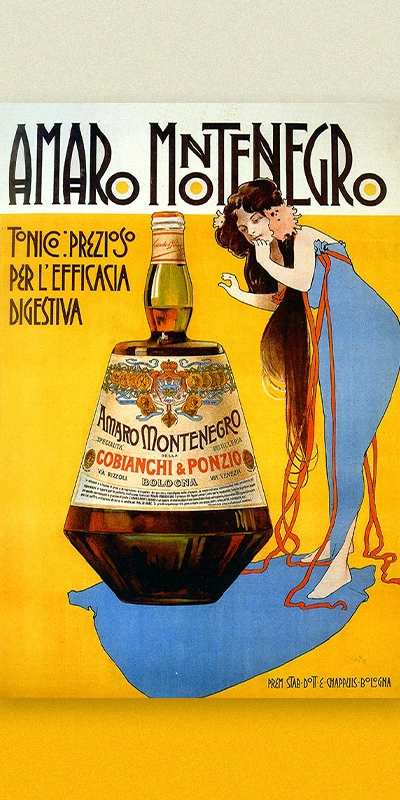Amaro Montenegro: Stanislao Colabianchi’s elixir of long life
The lives of royals, explorers, and poets intertwine with one another in the incredible story of this liqueur.

In 1862, as a newly united Italy celebrated its first birthday, Stanislao Cobianchi was born in Bologna.
The second-born son of one of Bologna’s noble families (his brother, Cleopatro, was the inventor of the famous public bath houses), according to the patrilineal system which was still very much in use at the time (Erbhof, “Maso Chiuso”, as the German’s call it), Stanislao didn’t have many options: either a career in the church or one in the military.
His father chose the first one.
From a very young age Stanislao was intelligent and curious, but with a strong, impatient, and rebellious nature.
Chasubles and stoles simply didn’t suit him, and one day (or rather one night), while still a teenager and without his father’s blessing, he ran away from the Archiepiscopal Seminary, too proud to acquiesce to the decisions of others.
A LONG JOURNEY AMID SPICES AND EXOTIC FRUIT
Stanislao kept running; eighty kilometers separated him from freedom and from his destiny.
He ran towards the sea. The closest port was that of Ravenna, “THE” port of Emilia-Romagna ever since the time of Emperor Augustus.
There he boarded a cargo ship (not flying the Liberian flag) as a cabin boy, with which, as in a Homeric novel, he travelled for years, crossing the seas and oceans of the entire world.
Anatolia, Madagascar, China, and Ceylon (now Sri Lanka), as well as the Tropics and the Caribbean.
Thanks to this incredible experience, which seems straight out of the pages of Hugo Pratt’s Corto Maltese, having left behind a provincial, immature, and regionalistic Italy that wasn’t yet even fully unified, in an era where time moved slowly and in which, for man, distances were insurmountable, Stanislao embraced the whole world, savoring spices, fruits, aromas, and herbs that he would always remember.

THE BIRTH OF THE ELIXIR OF LONG LIFE
Upon returning to Italy, he headed straight for the turbulent Piedmont of the Savoys, recently stripped of its status as the country’s capital, where, working in several distilleries, he learned the art of making liqueurs and proved to be a skilled herbalist and alchemist.
His exotic memories of those distant lands would never leave him. For four years he worked on his idea of a bitter, blending the Italian tradition of génépi, orange, and bitter orange (among others) with tropical spices like cloves, cinnamon, and nutmeg.
In 1885 he created the recipe for his “Elixir of Long Life”: a blend of seven different alcoholic solutions, extracted from forty different ingredients, including spices, dried fruit, roots, seeds, barks, citrus peels, rhizomes, flowers, and precious woods from the four corners of the world.
The perfect number: seven, like the virtues; seven, like the wonders of the world; but, most importantly, seven, like the metals of alchemical transmutation.
The recipe, to this day an absolute secret, written in his own hand, step by step, with ingredients, amounts, production techniques, ageing, and blending, is still locked away in a safe.
Even the iconic bottle was designed, ex novo, by Stanislao himself, who wanted it to recall the vial of an alchemical potion.
HIS RETURN TO BOLOGNA
That same year, our Italian version of Will Hunting, decided to return home (Oh, the Call of the Wild!), where he worked first in the Cillario-Gancia wine cellar, an obligatory evening destination of a no-longer-young Giosuè Carducci, and subsequently opened a bouvette in Piazza Maggiore.
In 1895, in a cellar in Borgo Panigale, he opened the Cobianchi Stanislao Steam Distillery before moving to San Lazzaro di Savena, where he also invented and produced Big Ben dry gin, Lancieri di Monforte brandy, Cherry Brandy, Crema all’Ovo, and the rhubarb liqueur Bergia.

PODGORIZZA-TURIN, COAST TO COAST
Meanwhile, at the royal palace in Turin, an extremely worried Queen Margherita, with the help of Francesco Crispi (of Albanian origins) acting as sycophant, arranged a healthy and revitalizing wedding for her only son, the future King: the not exactly dashing (1.53 meters short) Vittorio Emanuele III.
She chose Jelena Petrović-Njegoš, known to most as Elena of Montenegro (daughter of King Nicholas I), who in just five months went from being unknown to being the Queen of Italy.
Her Royal Highness (it’s truly appropriate to call her this…) was 1.80 meters tall, quite a remarkable height for the time, and was specifically chosen to distance the genetic defects and hemophilia that meandered about the Savoy family’s DNA from the bloodline, giving Italy a strong and healthy heir.
Elena won the heart of every Italian, even that of our Stanislao. He had actually been to the coast of Montenegro, docking in the port of Bar, where he tasted Karik, the local bitter made from herbs.
Thus, in 1896, the year of the Italo-Montenegrin Royal Marriage, he decided to dedicate his most precious creation to the princess, calling it Amaro Montenegro.
THE TEETOTAL POET AND THE LIQUEUR OF VIRTUE
But the story of Stanislao and his bitter continues intertwine with that of Italy.
A veteran of the World’s Fairs in Paris, Brussels, and Turin, where Cobianchi swept the awards and medals, shining an international spotlight on his bitter, in 1921 he decided to dedicate several bottles to the Chiara Ferrragni of the time, also known as Gabriele D’Annunzio.
The Italian poet, already holed up at his golden retreat in the Vittoriale degli Italiani, in Gardone Riviera, wasn’t exactly a blushing schoolgirl.
A voracious connoisseur of only a few sinful delicacies, he was not passionate about the culinary arts and was (at least officially) more or less a teetotaler.
Alcohol represented an unbearable contradiction, for the great poet, in the life values of Nietzsche’s superman.

Nevertheless, he was the most influential teetotaler in the history of beverages!
Thanks to his genius forays in advertising, he had already made a fortune for other Italian liqueurs like Aurum, Select, and Amaretto di Saronno. Luckily for Stanislao (and for all of us), he was just as generous with Amaro Montenegro.
D’Annunzio himself penned a thank you letter to Cobianchi, in which he wrote that his friends and Legionnaires found the liqueur to be a delicacy, calling it the “Liqueur of Virtue”.
Stanislao didn’t wait for him to say it again and included the quote, complete with D’Annunzio’s signature at the bottom, on all of Amaro Montenegro’s advertisements, proclaiming its success.
Memento Audere Semper!
Ready to join the Vinhood family?
Vinhood is the First Italian Taste Agency. We explore the world of taste to guide people about how to choose and consume products and supporting companies in nurturing personalized relationships with their customers.
Read more
- From an 'ammazzacaffè' to a trendy drink: 4 recipes to try with bitters
 For years, bitters were underestimated and seen as a mere “ammazzacaffè” or “digestif”. Now thanks to cocktails and the art of mixology, they have become a trendy drink. We have highlighted 4 cocktails made from bitters that you can make at home or sip in a bar.
For years, bitters were underestimated and seen as a mere “ammazzacaffè” or “digestif”. Now thanks to cocktails and the art of mixology, they have become a trendy drink. We have highlighted 4 cocktails made from bitters that you can make at home or sip in a bar. - Bitters and spirits in the world of Vinhood
 The typical Italian is considered to be a curious drinker and when sitting at the table, wine is not the only companion. At the end of each meal, Italians know that they can always rely on a digestive aid. Born from centuries of research by pharmacists, monks, and even alchemists, this exquisite mixture of medicinal herbs infused in ethyl alcohol, has become over time an important and necessary tradition at the ending of every banquet.
The typical Italian is considered to be a curious drinker and when sitting at the table, wine is not the only companion. At the end of each meal, Italians know that they can always rely on a digestive aid. Born from centuries of research by pharmacists, monks, and even alchemists, this exquisite mixture of medicinal herbs infused in ethyl alcohol, has become over time an important and necessary tradition at the ending of every banquet.

